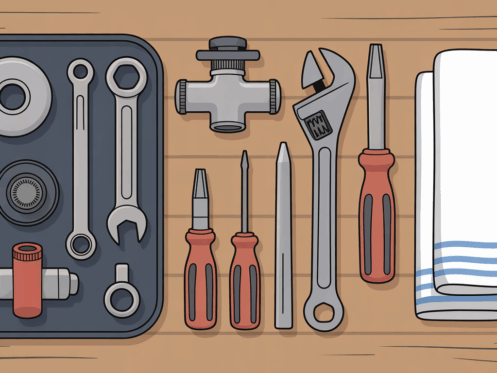DIY Guide to Fixing a Leaking Toilet Valve
At Quality Cooling & Heating, we understand the importance of a well-functioning home. A leaking toilet valve might seem like a small issue, but it can lead to significant water waste and increased bills if ignored. Catching and addressing a leak early ensures your bathroom stays in top shape and prevents any potential damage.
Spotting a Leaking Toilet Valve
Identifying a leak early can save you from bigger problems down the line. Here are some signs to keep an eye out for:
- Unusual noises like hissing or gurgling from the toilet.
- Water continuously running or the sound of refilling when not in use.
- Water stains around the toilet base or on the floor.
If you notice these signs, act quickly. For more tips on detecting water issues, visit Portland.gov. Early action can prevent costly repairs and keep your plumbing efficient.
DIY Steps to Fix a Leaking Toilet Valve
Fixing a leaking toilet valve can be straightforward with the right steps. Here’s how you can tackle it:
- Turn Off the Water Supply: Find the shut-off valve behind the toilet and turn it clockwise to stop the water.
- Drain the Toilet: Flush to empty the tank and use a sponge or towel to soak up any leftover water.
- Remove the Old Valve: Unscrew the water supply line and remove the old valve, noting its type for replacement.
- Install the New Valve: Attach the new valve, ensuring it matches the old one. Tighten securely and reconnect the water supply line.
- Turn On the Water Supply: Gradually turn the shut-off valve counterclockwise to restore water flow. Check for leaks and adjust if needed.
You’ll need a few basic tools and materials for this repair:
- Adjustable wrench
- Screwdriver
- Replacement valve
- Towels or sponge
Explore eco-friendly plumbing solutions with these tips.
Related Plumbing Concerns
While fixing your toilet valve, you might encounter other plumbing issues like a slow-draining toilet or a clogged wash basin. Here’s how to address these:
Toilet Draining Slow
A slow drain may result from a blockage or vent issue. To fix this:
- Use a plunger to clear minor clogs.
- If needed, use a plumbing snake for deeper blockages.
- Check the roof vent for blockages that could affect drainage.
Wash Basin Issues
If your wash basin is clogged, try these solutions:
- Clean the drain stopper to remove hair and debris.
- Use baking soda and vinegar to naturally break down clogs.
- For stubborn clogs, a plunger or plumbing snake can help.
Prevent future issues with regular maintenance. Learn more at Amica Insurance.
Maintaining Long-Term Plumbing Health
- Regular Inspections: Schedule routine checks of your plumbing fixtures to catch potential problems early.
- Mindful Usage: Avoid flushing non-degradable items down the toilet and be cautious of sink waste.
- Water Pressure: Monitor your water pressure to prevent wear and tear.
- Seasonal Maintenance: Prepare your plumbing for seasonal changes, like insulating pipes in winter.
- Professional Maintenance: Consider professional services for thorough inspections and expert advice. More tips are available at Amica Insurance.
Conclusion: When to Seek Professional Help
Tackling plumbing issues like a leaking toilet valve or clogged wash basin quickly can save you time and money. While DIY fixes are doable, knowing when to call in the experts is crucial. Quality Cooling & Heating is here for all your plumbing needs in the Greater Austin area and Abilene. Our team is committed to providing reliable solutions to keep your home comfortable. Visit our website to learn more about our services. If you face challenges or prefer professional help, don’t hesitate to contact us. We offer expert plumbing services in your area, ensuring your home remains functional and comfortable. For water heater issues, check out our guide on water heater leaks.


